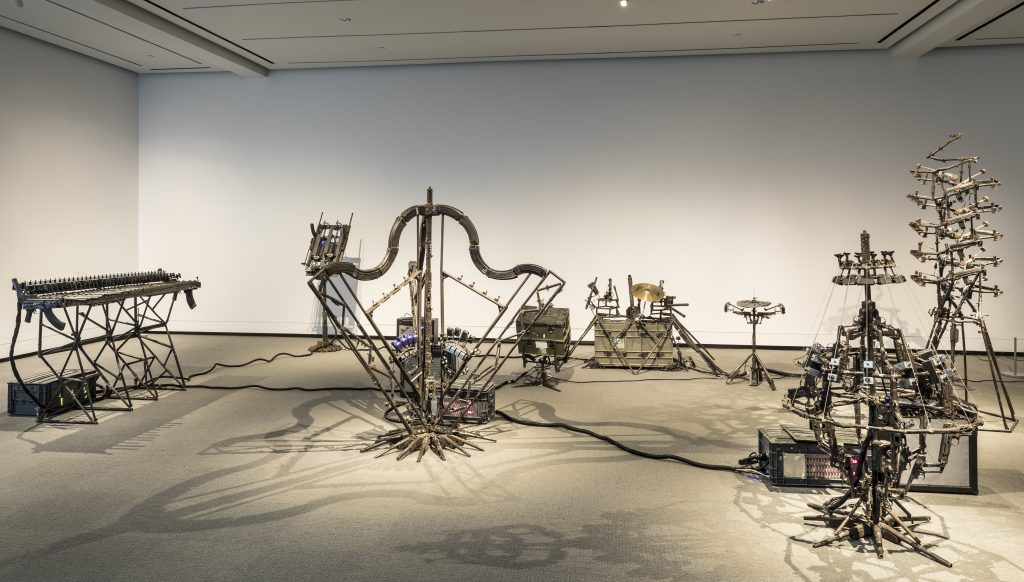5 4 3 2…[whistle]
[music with clapping]
So Come Out and Play is an annual festival. We’ve been running it now for twelve years.
It offers free games created—original games created by designers from all over the country, sometimes outside of the country.
You know, we think of it as a big street game field day festival.
People go out and use this dowsing rod to help you find different types of sound.
Right now we are at Come Out and Play Family Day here on Governor’s Island in New York City.
Myself and my colleagues at Brooklyn Game Lab are out here demoing Battle Lab, which is our physical live action roleplaying program.
What we’ve brought today is actually a couple different games that our campers have designed this summer. We go through the whole process from brainstorming, writing the rules, play testing, fixing it, and play testing it again. And finally playing and sharing our games.
Come Out and Play is a festival that started off just really for teens and adults, and has expanded to have games for people of all ages.
I played games. I went to the fencing. I went to the throwing the ball and putting it in the bucket.
We really think about, like, how do we get people to play together in different ways. It has to feel surprising and fresh, right? There’s nothing sadder in this world than a hopscotch grid that you’ve seen like eight times. They want a game that allows them to hang out with their friends. It’s a three-minute game that between like three and twenty-one people can jump in and play. It takes me like a minute and a half to explain, and once you’ve seen it played I don’t really have to explain it to you at all. And if somebody doesn’t like it, they’re like, alright, I’m going to go do something else. And then somebody else is like, this is my jam, I’m going to do this all night! This is our practice. This is, like, how we think about making something. We just want people to have experiences that they think are joyful and fun.
[music]
Return to the video.




